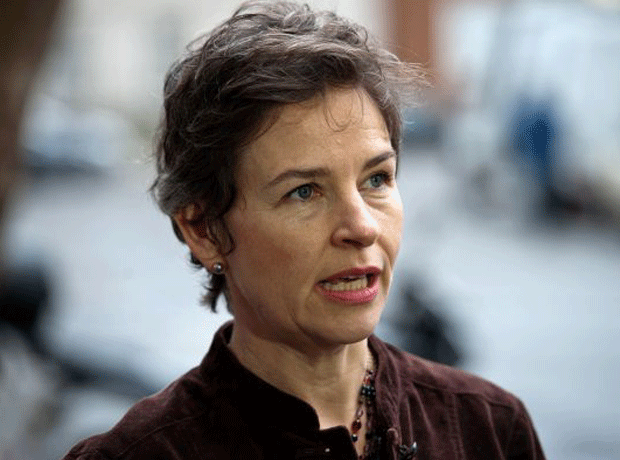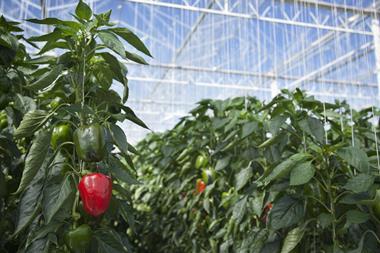A third of British children are now overweight. Most children eat nothing like the recommended levels of fresh fruit and vegetables.
Fewer children are taking exercise. Instead of cycling or playing in the park, they vegetate in front of the television.
That poses a huge health challenge for the future. Already we are seeing the first cases of adult-onset diabetes among teenagers normally linked to obesity among those over the age of 40. Diabetes generally increased hugely in recent years, and seems set to accelerate.
In the face of these trends, the importance of improved public health policy is self-evident. Rightly, much attention is on children we have to encourage their parents to ensure that they have healthier lifestyles.
There is a growing pressure for a ban on food advertising to the youngest of children particularly on television. Backbench MPs at Westminster and lobby groups argue that this would be a highly effective way of tackling the problem.
Their motivation is admirable but their strategy is unworkable. Putting a ban into place in reality would open up a regulatory minefield.
Take television viewing. Any parent knows how difficult it would be to isolate the viewing habits of children of different ages. When a group of children ranging in age from two years old to eight sits down to watch the popular cartoon series, Rugrats, how should the regulators define whether or not the advertising slots around that programme can or cannot be used for food advertising.
Some want broadcasters to set aside time in their schedules for "tots television". This would be free of advertising of food and sweets. But in an era of continuous children's channels, this is impossible to achieve.
Setting rules about which foods can be advertised also opens up a minefield. How does one judge whether a food is acceptable or not? A total ban on food would rule out the promotion of fruit and vegetables clearly ridiculous. But a partial ban would be equally problematic. Would regulators end up deciding which kind of fromage frais was sufficiently free of sugar to pass the test? It sounds like a regulatory nightmare.
And perhaps most importantly, although children may push for what takes their fancy, it is parents who take the purchase decisions. Of course, they often do so under pressure but the decisions are still theirs.
So the solution is not a ban but education. We need to educate parents about the scale of the problem and give them guidance about how to improve the lifestyle of their families.
And changing attitudes will also affect manufacturers. Already some are beginning to produce ranges of healthier foods directed at children. Sainsbury's Blue Parrot Café range is a good example, but there are others. They've done that because the demand is there.
Consumer pressure has already led to significant changes in the adult foods market. The same can be achieved with better education about the desirability of a good diet for the whole family.
But to achieve this, public health education will have to have a much higher place on the public policy agenda than it has in recent years. Tackling the rise of obesity and its related health issues will be a long and difficult challenge. It will require smart marketing to reach those parts of the population where health problems are greatest. That might mean, for example, encouraging the producers of popular TV like the soaps to reflect the problem in their storylines. It should involve the use of role models. And the education process must involve children, parents and teachers.
But the real challenge is in the supermarket queue. All too often shopping trolleys are full of produce, but with precious little balanced nutrition.
The role of public health education is to ensure that in the future parents are more aware of what they are buying and more likely to ensure that balanced nutrition is not missing from their weekly trolley.
{{COMMENT - GUEST }}
Fewer children are taking exercise. Instead of cycling or playing in the park, they vegetate in front of the television.
That poses a huge health challenge for the future. Already we are seeing the first cases of adult-onset diabetes among teenagers normally linked to obesity among those over the age of 40. Diabetes generally increased hugely in recent years, and seems set to accelerate.
In the face of these trends, the importance of improved public health policy is self-evident. Rightly, much attention is on children we have to encourage their parents to ensure that they have healthier lifestyles.
There is a growing pressure for a ban on food advertising to the youngest of children particularly on television. Backbench MPs at Westminster and lobby groups argue that this would be a highly effective way of tackling the problem.
Their motivation is admirable but their strategy is unworkable. Putting a ban into place in reality would open up a regulatory minefield.
Take television viewing. Any parent knows how difficult it would be to isolate the viewing habits of children of different ages. When a group of children ranging in age from two years old to eight sits down to watch the popular cartoon series, Rugrats, how should the regulators define whether or not the advertising slots around that programme can or cannot be used for food advertising.
Some want broadcasters to set aside time in their schedules for "tots television". This would be free of advertising of food and sweets. But in an era of continuous children's channels, this is impossible to achieve.
Setting rules about which foods can be advertised also opens up a minefield. How does one judge whether a food is acceptable or not? A total ban on food would rule out the promotion of fruit and vegetables clearly ridiculous. But a partial ban would be equally problematic. Would regulators end up deciding which kind of fromage frais was sufficiently free of sugar to pass the test? It sounds like a regulatory nightmare.
And perhaps most importantly, although children may push for what takes their fancy, it is parents who take the purchase decisions. Of course, they often do so under pressure but the decisions are still theirs.
So the solution is not a ban but education. We need to educate parents about the scale of the problem and give them guidance about how to improve the lifestyle of their families.
And changing attitudes will also affect manufacturers. Already some are beginning to produce ranges of healthier foods directed at children. Sainsbury's Blue Parrot Café range is a good example, but there are others. They've done that because the demand is there.
Consumer pressure has already led to significant changes in the adult foods market. The same can be achieved with better education about the desirability of a good diet for the whole family.
But to achieve this, public health education will have to have a much higher place on the public policy agenda than it has in recent years. Tackling the rise of obesity and its related health issues will be a long and difficult challenge. It will require smart marketing to reach those parts of the population where health problems are greatest. That might mean, for example, encouraging the producers of popular TV like the soaps to reflect the problem in their storylines. It should involve the use of role models. And the education process must involve children, parents and teachers.
But the real challenge is in the supermarket queue. All too often shopping trolleys are full of produce, but with precious little balanced nutrition.
The role of public health education is to ensure that in the future parents are more aware of what they are buying and more likely to ensure that balanced nutrition is not missing from their weekly trolley.
{{COMMENT - GUEST }}


















No comments yet